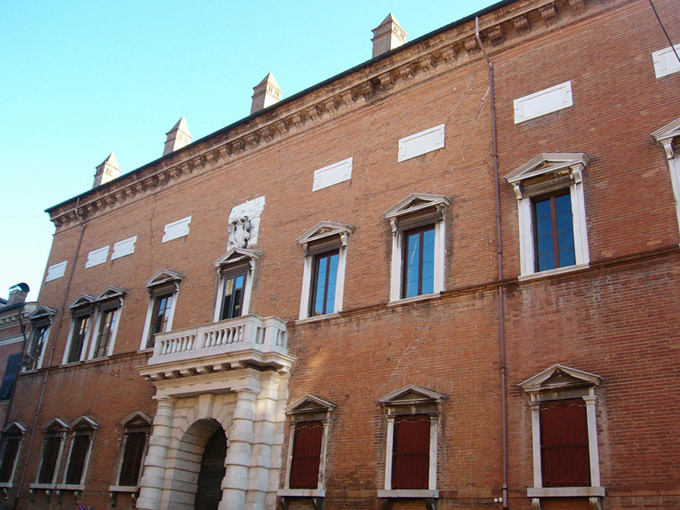 Palazzina Marfisa d'Este
A magnificent example of sixteenth-century manor house, this beautiful building was built by Francesco I d'Este. In 1578 the building went to inherit the daughter of Francis I, Marfisa, art lover and patron of Torquato Tasso. The building, on a single floor, has a facade of red brick in sight punctuated by large rectangular windows and a beautiful marble portal, the interior ceilings with beautiful displays of the '500 grotesque work of Filippi and is furnished with valuable furniture of the '500 and '600 of the famous collection of Dona Rose. The building also exhibits works of note such as: the marble bust of Duke Ercole, the sculpture of the Madonna and the portraits executed by the Lombards of Marfisa and Bradamante, daughters of Francis I. The residence also houses a valuable collection of art objects and antiques and is home to become museum.
Bevilacqua-Costabili's Palace
Splendid palace built in the first half of the fifteenth century, was the residence of the first Marquis Bevilacqua, family service of the Este court.
In the nineteenth century became the property of the Marquis Giovanni Battista Costabili until the end of the century, when the building went through several changes of ownership.
The facade was completely restored in the seventeenth century by Cardinal Bonifacio Bevilacqua, who had put beautiful reliefs and statues that recall the decoration of the Palazzo Bentivoglio.
Were incorporated into the facade of limestone tables Noriglio framed in brick, beautiful busts placed in niches, with gable windows in Istrian stone and a beautiful portal with two female sculptures symbolic sorregono a beautiful balcony.
Since 1988, the palace is home to the University of Ferrara.
Bonacossi Palace
Built in 1468 by Duke Borso d'Este, this magnificent building was allowed to Diotisalvi Nero, an exile from Florence. The initial project was a one-story structure with a central tower where, inside, the wooden ceiling was decorated with the arms of Nero and the representation of companies of the stock. In 1643 the building was sold to Count Bonacossi that changed the exterior and interior, in fact, he should open the windows and the inclusion of balconies in addition to existing decoration of baroque and neoclassical. In addition, in four rooms on the ground floor have been found valuable coffered wooden ceilings of the '500, which, painted in bright colors, geometric elements reproduce. Next to find sumptuous Baroque stucco images that represent the artistic element of greater value.
Canonici Mattei Palace
Other Palaces
Stroll down the winding medieval streets to realize the treasure chest of wonders that this beautiful city has to offer. Historical buildings embellished with decorations, shiny marble and brick to be admired, a succession of beautiful palaces, old houses, churches, squares and works of art to live and breathe the air of the past of Ferrara. Beautiful old buildings are now museums have become important keeping intact their former glory, as an example just look at the Palazzo dei Diamanti, which now houses the National Art Gallery, built in 1492 has become an issue thanks to its special architectural masterpiece. Just think that over 8000 diamond-shaped indentations will fully cover the value of giving two-sided painting the facade. Another resident of particular importance is that Romei Palace is a beautiful example of a mansion. |